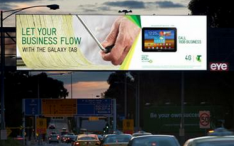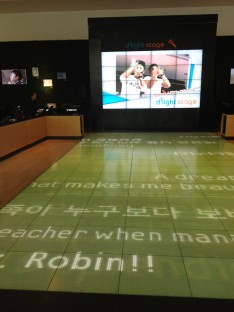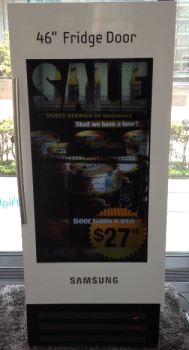The future of outdoor advertising?
 A series of announcements made in recent weeks by Australia’s big outdoor ad firms seem to suggest that this country is a leader in digital out-of-home technology.
A series of announcements made in recent weeks by Australia’s big outdoor ad firms seem to suggest that this country is a leader in digital out-of-home technology.
The reality? Australia is playing catch up. Think this is unfair? Then I’d suggest a trip to Seoul, which offers a glimpse at the future of outdoor.
 A fairly typical press release sent out by an Aussie outdoor firm recently trumpeted new technology that allows advertisers to change their messages on the gantry at Melbourne Airport three times a day. This only struck me as interesting because the first advertiser to use it is Samsung, which is spruiking its new Galaxy mobile phone.
A fairly typical press release sent out by an Aussie outdoor firm recently trumpeted new technology that allows advertisers to change their messages on the gantry at Melbourne Airport three times a day. This only struck me as interesting because the first advertiser to use it is Samsung, which is spruiking its new Galaxy mobile phone.
 Going to Seoul from Sydney is like walking between the sets of Bladerunner and Little House on the Prairie, partly because one of Korea’s biggest outdoor
Going to Seoul from Sydney is like walking between the sets of Bladerunner and Little House on the Prairie, partly because one of Korea’s biggest outdoor
 advertisers also makes the kit it and everyone else advertises on, plus a bunch of other stuff, from mobile phones, air conditioners and TVs to houses, hotels and hospitals, which the company generates a quarter of Korea’s GDP from selling.
advertisers also makes the kit it and everyone else advertises on, plus a bunch of other stuff, from mobile phones, air conditioners and TVs to houses, hotels and hospitals, which the company generates a quarter of Korea’s GDP from selling.


Robin,
An interesting OOH reflection of your recent visit to Seoul but maybe Australia is not quite as far behind as you might first think. The OOH activity in Korea generally and especially in Seoul has always been way ahead of almost every other international city I know. Their adoption of digital sky signs over the years and more recently digital street based formats is legendary and as you say not surprising being the home of some of the world’s largest display manufacturers.
The comments from Charmaine regarding the current absence of roadside digital displays in Australia, and in particular NSW is accurate. Poorly directed red tape is holding the sector here back but that will change over time as misguided myths are busted and change comes about.
In the mean time Australia is quite well served considering our population size, geographic challenges and the current commitment by Australian media buyers to OOH spend (I think in Korea OOH has traditionally attracted almost 20% of all media spend!).
Move past the roadside issue and there is actually quite a level of digital OOH available and more coming in development pipelines, certainly here at EYE. Interior precincts such as Malls, Airports and Uni common areas have provided us valuable audiences in extremely large numbers, terrific national scale and high value lifestyle segments. The digital networks are in place and the technology constantly being refreshed. These networks have been used widely but still primarily as electronic OOH. The big opportunity that is still to be actualised is the flexibility that digital offers – day parts, week parts, multiple creative execution flexibility for the same campaign etc – you name it but we don’t see adoption of this in campaigns. Maybe occasionally but it should be all the time. It’s not for the sake of making the case but for some reason the opportunity is not resonating in Australia. All thoughts, feedback and input welcome. Why is it so!
Cheers
Gerry